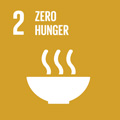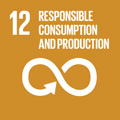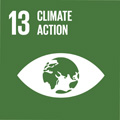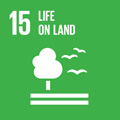- Docente: Silvio Salvi
- Credits: 9
- SSD: AGR/07
- Language: Italian
- Moduli: Cristian Forestan (Modulo Mod 1) (Modulo Mod 2) Marco Maccaferri (Modulo Mod 3) Silvio Salvi (Modulo Mod 4)
- Teaching Mode: Traditional lectures (Modulo Mod 1) Traditional lectures (Modulo Mod 2) Traditional lectures (Modulo Mod 3) Traditional lectures (Modulo Mod 4)
- Campus: Bologna
- Corso: Second cycle degree programme (LM) in Plant and Agricultural Biotechnology (cod. 5948)
Learning outcomes
At the end of the course the student has a solid knowledge of the biology and structure of the plant genome and its characterizing elements including the nature and diffusion of mobile elements, polyploidy and the chloroplast genome. The student knows genomic and biotechnological techniques aimed at dissecting the structure of the plant genome, identifying genes and studying their expression and function. Furthermore, the student knows the theoretical-practical aspects relating to the main methodologies for selecting cultivated plants, useful for promoting more sustainable agricultural systems; he knows the principles of quantitative and population genetics, breeding methods including crossing, selection, and genomic and biotechnological methods, including genome editing. He knows the methods of studying genetic diversity for the evaluation, protection and use of genetic resources.
Course contents
Module 1 (Silvio Salvi)
Introductions to the genomes of cultivated plants: structure of the eukaryotic chromosome, nucleosome, telomere and centromere, genome structure, evolution of genomes. Mitochondrial and chloroplast genomes. Polyploidy in plants and phylogeny. Haploidy and importance in genetic improvement.
Concepts of forward and reverse genetics. Gene cloning: meaning and main methods with emphasis on plants of agricultural interest. Positional cloning. Cloning via insertion mutagenesis. BSA (for mapping by sequencing see module 2). TILLING and other reverse genetics techniques. Types of tagging (transposon and T-tagging, etc). Discussion of scientific articles regarding forward and reverse genetics.
Review of quantitative genetics (Quantitative traits and components of phenotypic, genetic and environmental variance. Heritability. See also module 3). Review on molecular markers. QTL analysis: general principles. QTL analysis via linkage, at the single marker and for intervals via regression. LOD score and other parameters. Introduction to GWAS (see module 3). Discussion of scientific articles on QTL analysis. Practical exercise on QTL analysis with field data collection, data processing, QTL analysis with software in the computer laboratory.
Genetic engineering in plants. Biological bases and use of Agrobacterium. Examples of GMO cultivars of cultivated species. Cis-genesis. Definition and techniques of genomic editing. Editing methods based on CRISPR-CAS. Critical analyzes of the potential of editing in Italian agriculture.
Module 2 (Cristian Forestan)
Sequencing of plant genomes: general strategies. Sequencing techniques (Sanger, Next-Generation-Sequencing, long-read and single molecule); assembly, docking and annotation of genomes. Genomics to support mapping and cloning. SNP-array. Mapping-by-sequencing.
Genomic browsers and functional databases. Main genomic projects of cultivated plants.
Transposable elements: biology, evolution and mechanisms of production of genetic variability. DNA methylation and epigenetic regulation mechanisms and techniques for the analysis of the epigenome.
Analysis of the transcriptome and regulation of gene expression: transcriptomic analyzes from microarrays to RNA-seq, up to single cell transcriptomics and spatial transcriptomics. Use of transcriptomics to study gene function. Time-course experiments. Co-expression network. Identification of the master switches of a pathway. Techniques for identification of transcription factor binding sites. Gene expression database.
Other –omics: proteome analysis and metabolomics. Integrating omics for understanding systems biology.
Module 3 (Marco Maccaferri)
Genetic structure of autogamous and allogamous plant populations. Neutral model. Hardy-Weinberg law and insights into population genetics. Main types of selection: purifying, positive, diversifying. Linkage disequilibrium. Gene haplotypes and long-range haplotypes. Methods for measuring genetic diversity in populations.
Plant genetic resources; germplasm collections. Genetic structure of natural and artificial populations and methods of analysis and improvement of the same. Methods of collection and conservation and molecular and phenotypic characterization of plant genetic resources.
Pre-breeding and role of biodiversity in genetic improvement programs. Collections built through Introgressions assisted by molecular markers and the concept of “linkage drag”.
Domestication process of cultivated plants and genetic consequences. Domestication syndrome and its molecular bases. Main genes involved in domestication. Concept of selective sweeps and their identification in populations.
Examples of useful genes and alleles/mutations used in breeding. The genes of N. Strampelli and N. Borlaugh. Main regulatory genes and gene networks of development processes and response to abiotic stress. Multiallelic genes, self-incompatibility S locus and disease resistance loci.
Association mapping analysis or GWAS in populations, germplasm collections, variety panels.
Analysis of differences between mapping populations and breeding populations.
Further techniques for breeding: recombination modifications, the Ph gene in cereals. Molecular bases of heterosis. Mutagenesis. Synthesis of synthetic polyploids using germplasm accessions. Synthesis of new species via induction of polyploidy and accelerated domestication.
Module 4 (Roberto Tuberosa)
Introduction to genetic improvement in the agri-food and agro-industrial supply chain for the increase in primary plant production, for the improvement of the healthiness of food products and the sustainability of agricultural systems. Main critical factors for planning a genetic improvement project. Main applications of marker-assisted selection (MAS) and genomic selection (GS). Selection for multiple traits and for adaptation to different environmental conditions.
Case studies: biotechnological applications for more productive, sustainable agriculture (tolerance to biotic and abiotic stress, reduction of chemical and energy inputs), and for the improvement of the nutritional profile - e.g. golden rice, for biomass production and for circular economy. Circular genomics.
Readings/Bibliography
Lorenzetti, Albertini, Frusciante, Rosellini, Russi, Tuberosa, Veronesi. 2018. Miglioramento genetico delle piante agrarie. EDAGRICOLE.
Scientific papers and additional supporting materials will be provided by the teachers during the lectures.
Teaching methods
Theoretical Lectures and practical exercises which will be offered in biotechnological laboratory, computer laboratory and greenhouse.
Assessment methods
Oral exam, at the end of the course.
Teaching tools
Lectures supported by Powerpoint projections, guided visits to seed and nursery companies, participation in seminars or professional events in the sector.
Office hours
See the website of Silvio Salvi
See the website of Cristian Forestan
See the website of
See the website of Marco Maccaferri
SDGs




This teaching activity contributes to the achievement of the Sustainable Development Goals of the UN 2030 Agenda.
